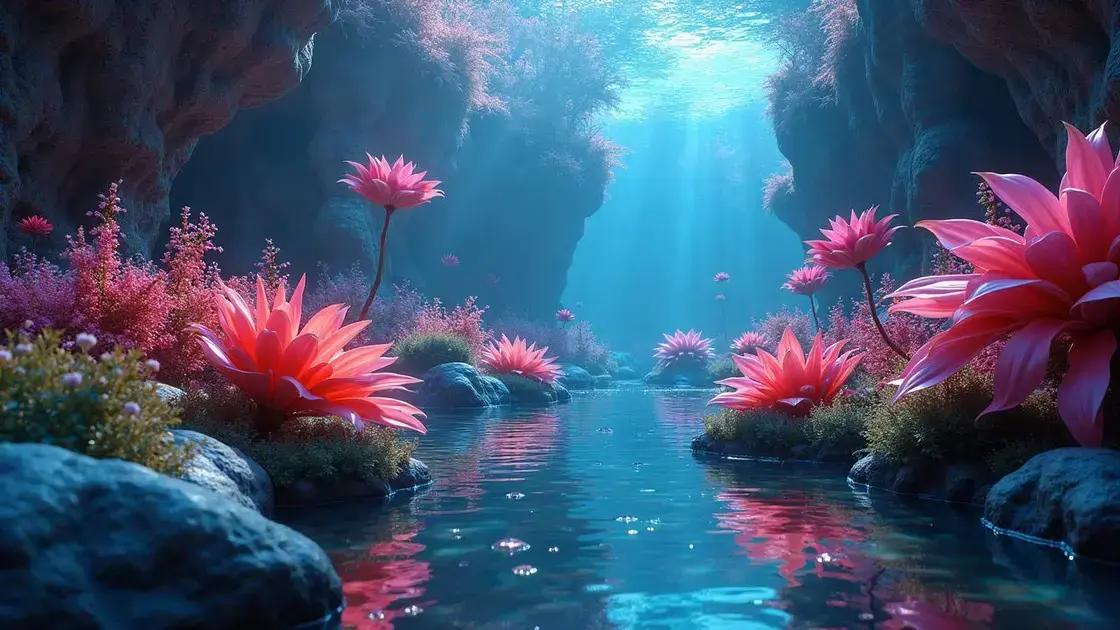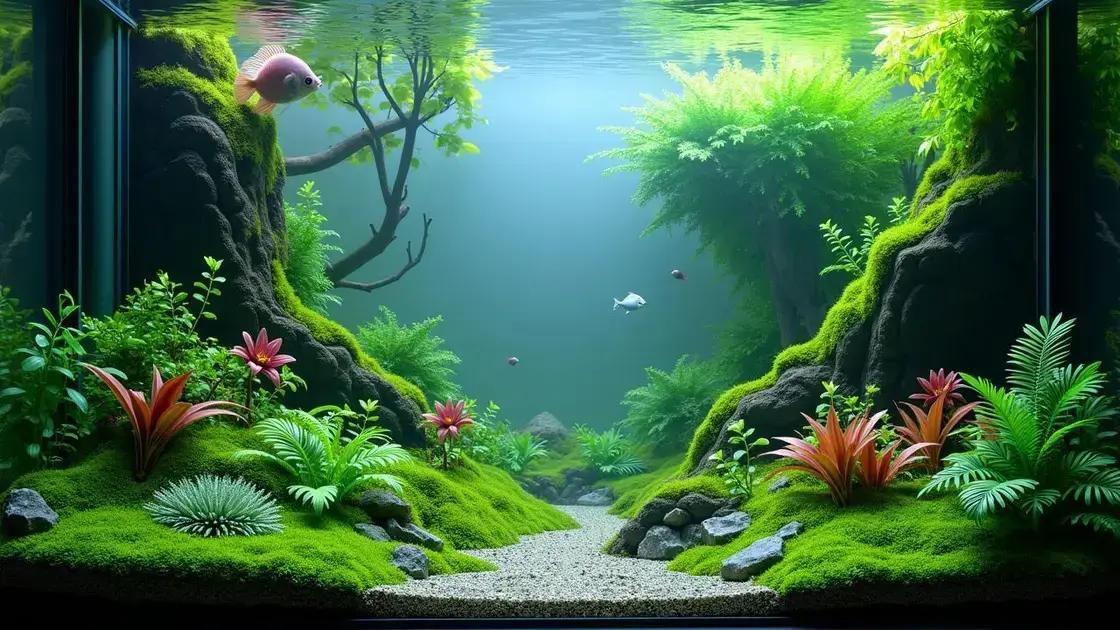How to Care for Aquarium Plants: 5 Expert Tips for Beginners
How to care for aquarium plants can often seem daunting, but it’s more straightforward than you might think. Creating a flourishing aquatic environment involves more than just choosing the right plants; it requires knowledge of lighting, nutrients, and even water conditions. Dive into these key concepts and empower yourself with the skills to nurture a stunning aquarium!
Table of Contents
ToggleUnderstanding basic water conditions for aquarium plants
Understanding basic water conditions for aquarium plants is vital to ensure the health and vitality of your aquatic greenery. Aquarium plants thrive in specific water conditions that mimic their natural habitats. Here, we will break down the essential factors that contribute to optimal water conditions for your plants.
Key factors affecting water conditions
- pH level: The pH level of your aquarium water determines the acidity or alkalinity. Most aquatic plants prefer a pH range between 6.5 and 7.5.
- Hardness: Water hardness refers to the concentration of dissolved minerals. Soft to moderately hard water is ideal for most aquarium species.
- Temperature: Temperature plays a crucial role in plant growth. A range of 72°F to 78°F is suitable for many common aquatic plants, though some may have specific requirements.
Testing your water conditions
- Use a reliable water testing kit to measure pH, hardness, and other parameters.
- Regularly check your water conditions, especially after water changes.
- Adjust water parameters gradually to avoid shock to the plants.
Tuning your water conditions
- Consider using a quality water conditioner to remove chlorine and toxins.
- Introduce natural elements like driftwood or rocks to buffer the water chemistry.
- Monitor the growth and health of your plants to assess if adjustments are needed.
| Condition | Ideal Range | Notes |
|---|---|---|
| pH | 6.5 – 7.5 | Test regularly to maintain balance. |
| Hardness | Soft to moderately hard | Check with a hardness test kit. |
| Temperature | 72°F – 78°F | Use a reliable thermometer to monitor. |
Regular maintenance of these water conditions is essential for caring for aquatic plants. For further insights, consider exploring indoor gardening techniques to enhance your aquarium’s ecosystem.
Optimal lighting needs for aquatic plant health

Optimal lighting needs for aquatic plant health are crucial to creating a thriving underwater ecosystem. The right lighting not only promotes growth but also enhances the beauty of your plants. Here, we will explore the various aspects of lighting that your aquarium requires.
Types of lighting options
- LED lights: These energy-efficient bulbs provide a strong light with minimal heat, ideal for plant growth.
- Fluorescent lights: Widely used in aquariums, they are available in a range of spectrums suitable for aquatic plants.
- Metal halide lights: Powerful and effective for deep tanks; however, they generate significant heat and require cooling systems.
Understanding light requirements
- Determine the light intensity needed by assessing the type of plants in your aquarium.
- Provide a photoperiod of 10-12 hours a day to mimic natural sunlight and avoid algae growth.
- Use a PAR meter to measure the photosynthetic active radiation in your tank.
Common mistakes in aquarium lighting
- Over-lighting can lead to excessive algae growth and stress on your plants.
- Using outdated or incorrect light spectrums can lead to poor plant health.
- Inconsistent lighting schedules can disrupt the growth of your plants.
| Light Type | Pros | Cons |
|---|---|---|
| LED | Energy-efficient, long-lasting | Initial cost may be higher |
| Fluorescent | Widely available, good growth | Shorter lifespan compared to LED |
| Metal Halide | High-intensity light | High heat output, energy consumption |
Maintaining proper lighting is essential for caring for aquatic plants. For more insights on managing your plants, consider exploring indoor gardening techniques.
Essential nutrients and fertilizers for thriving plants
Essential nutrients and fertilizers for thriving plants are critical to the overall health and growth of your aquarium greenery. Understanding these key components can significantly enhance the vitality of your aquatic plants, ensuring they flourish beautifully.
Key nutrients for aquarium plants
- Nitrogen: Vital for leaf growth and overall plant vitality.
- Phosphorus: Supports root development and flowering.
- Potassium: Essential for regulating osmotic pressure and overall plant health.
- Iron: Crucial for chlorophyll production and preventing yellowing of leaves.
- Trace elements: Include micronutrients like magnesium, manganese, and zinc that are vital in small amounts.
Types of fertilizers
- Liquid fertilizers: Easy to apply and quickly absorbed by plants.
- Root tabs: Slow-release fertilizers inserted in the substrate, ideal for nutrient-hungry plants.
- Granular fertilizers: Provides long-term nutrient release and can be mixed into the substrate.
Applying fertilizers properly
- Follow the manufacturer’s recommendations for dosages to prevent over-fertilization.
- Introduce nutrients gradually and monitor plant response to avoid stress.
- Consider using a water testing kit to ensure balanced nutrient levels in your tank.
| Nutrient | Benefit | Sources |
|---|---|---|
| Nitrogen | Promotes healthy leaf growth | Fish waste, liquid fertilizers |
| Phosphorus | Enhances root and flower growth | Root tabs, powdered fertilizers |
| Potassium | Strengthens plant cell structure | Granular fertilizers, potassium chloride |
Understanding and applying the right nutrients is essential for caring for aquatic plants. For further tips on managing your indoor garden, consider exploring indoor gardening techniques.
In conclusion
Caring for aquarium plants is essential for maintaining a vibrant and healthy aquatic environment. By understanding the basic water conditions, optimizing lighting, and providing the right nutrients and fertilizers, you can create the perfect habitat for your plants to thrive. Always keep an eye on the needs of your aquatic greenery and make adjustments as necessary. For more tips on enhancing your indoor garden, check out these tips on enhancing your indoor garden.

